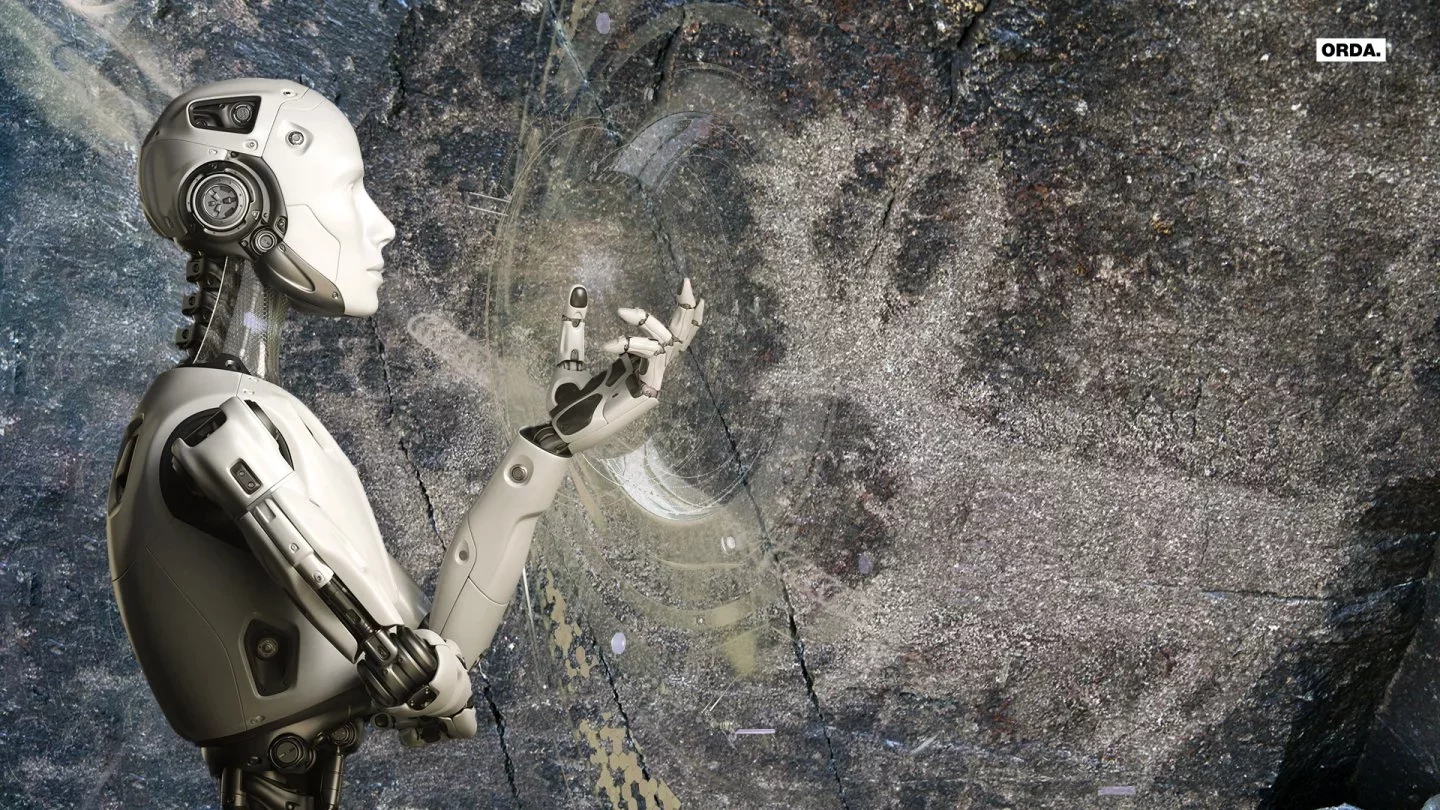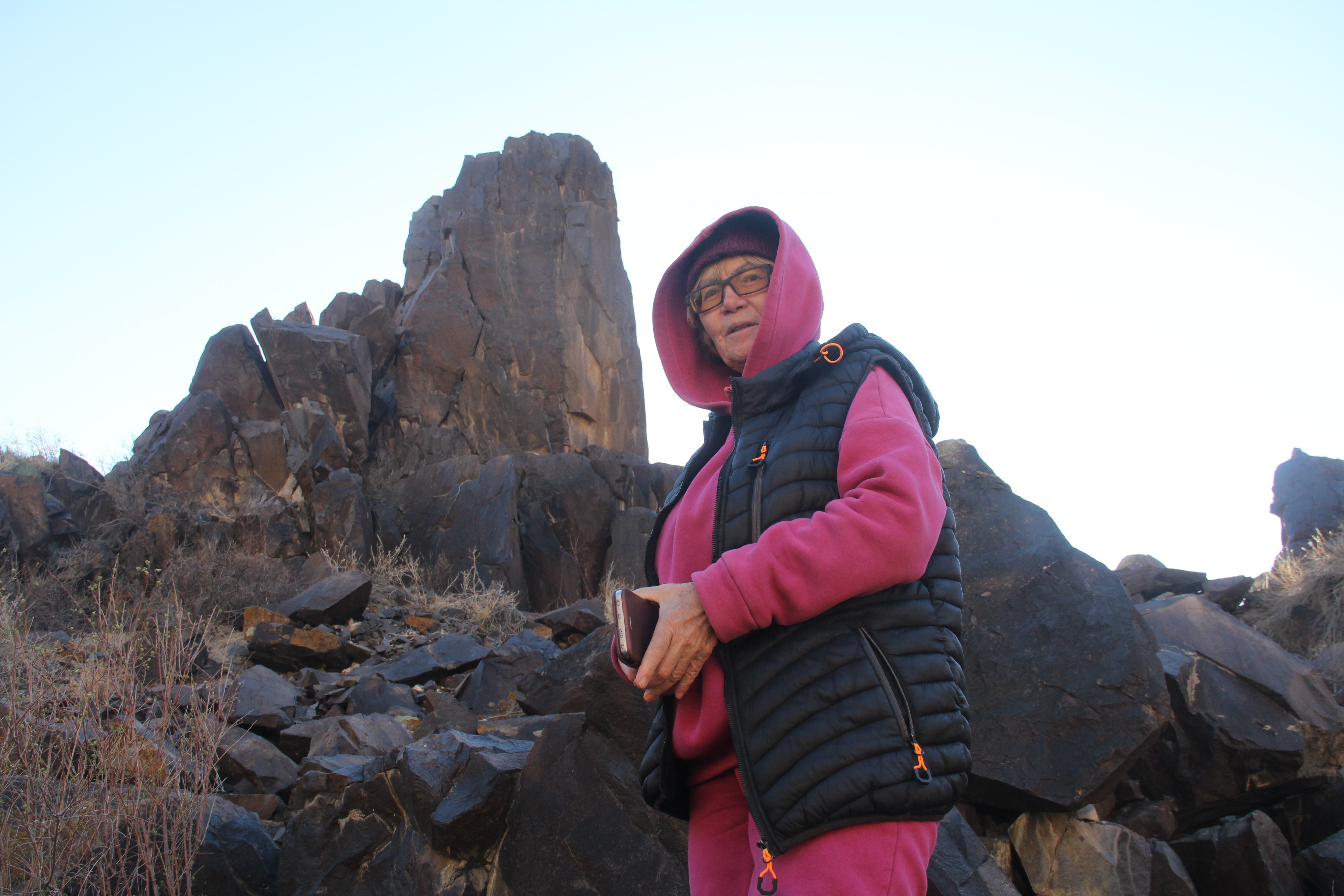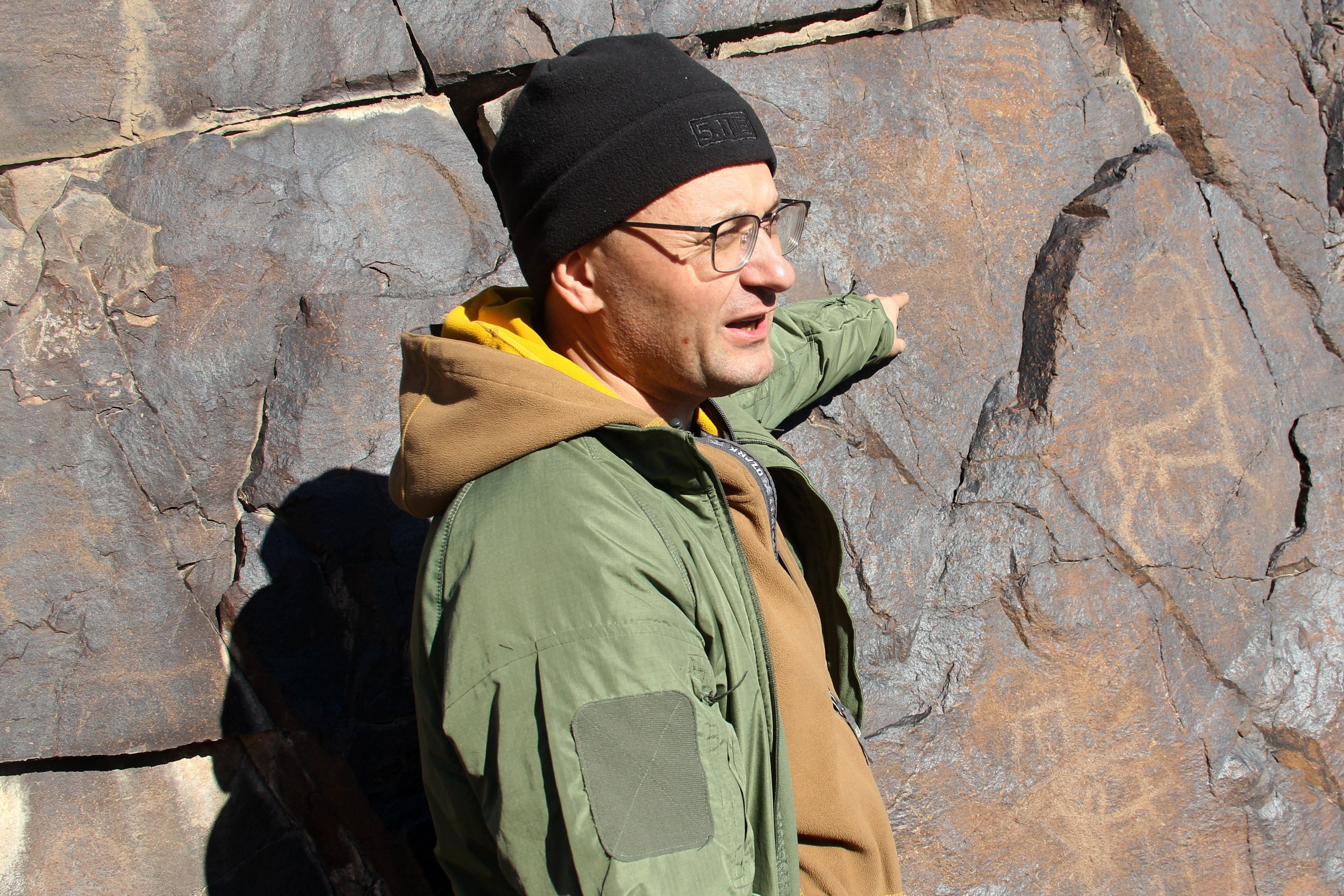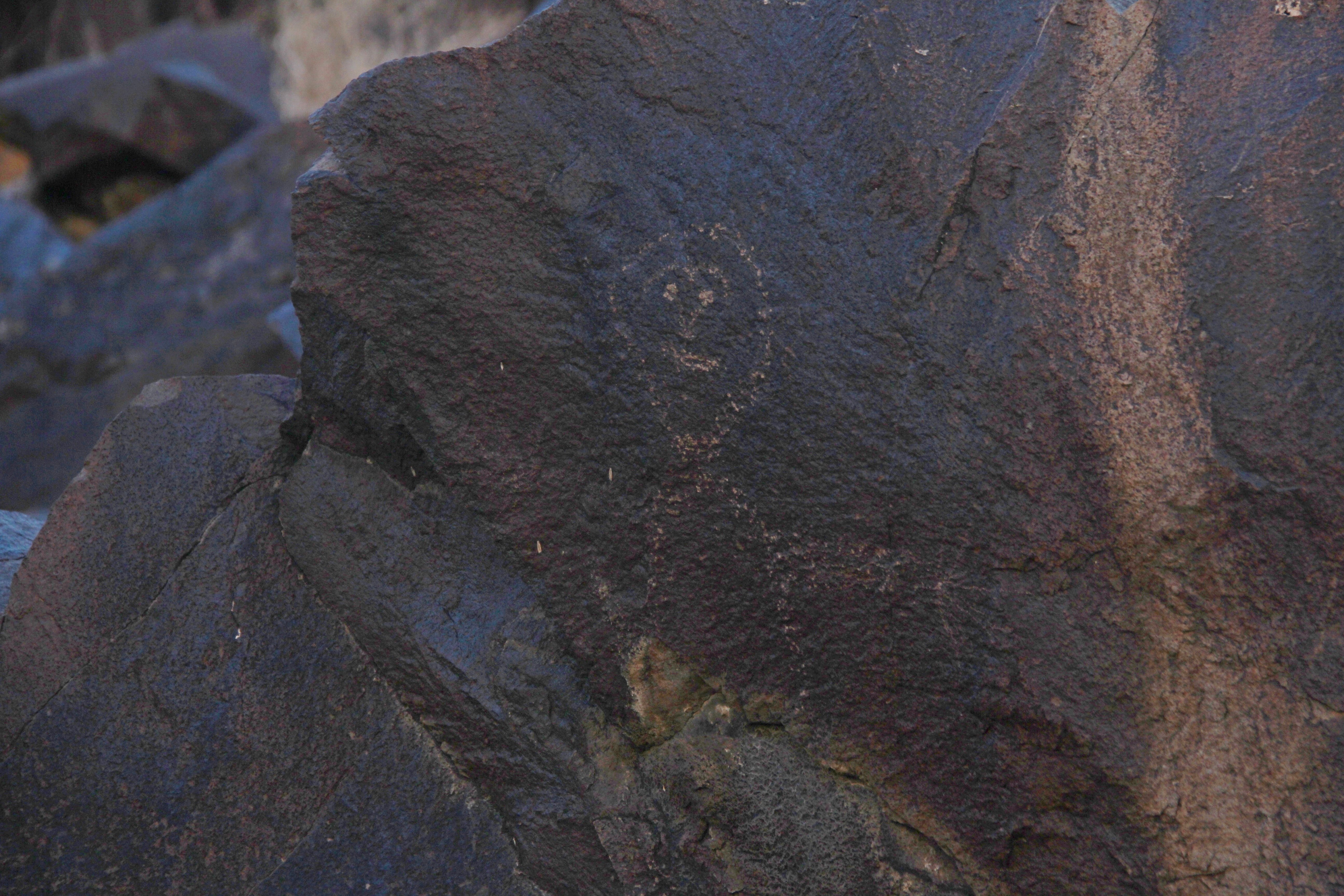Digital Archaeologist: How Artificial Intelligence Is Helping to Study Kazakhstan’s Petroglyphs
 Photo: Orda.kz
Photo: Orda.kz
The abbreviation “AI” has become so common it might make some people roll their eyes. But not everyone is using artificial intelligence for entertainment. Some are putting it to good use — like the volunteer archaeologists from the Hunters for Petroglyphs foundation, who hope AI will make it much easier to study the thousands of ancient rock carvings scattered across Kazakhstan.
Orda.kz joined them to learn how.
To see firsthand how AI can assist in studying archaeological sites, an Orda.kz journalist joined the “hunters” on an expedition to the Terekty area of Altyn-Emel National Park.


There lies one of Kazakhstan’s many clusters of petroglyphs — Tanbaly Tas. There are about 30 places with this name across the country, but this one sits in a gorge of the Sholak Mountains.
It’s the perfect place to talk about rock art — the carvings are easy to spot here. Hundreds of depictions of goats, riders, camels, deer, and other figures can be seen with the naked eye.

You can say with a fair amount of confidence that Kazakhstan has the largest number of petroglyphs in the world. Maybe Mongolia or western China could compete, but we probably have more. The total number could reach hundreds of thousands. At one point, we even came up with the slogan ‘Kazakhstan — the Land of Petroglyphs’, and it’s 100% true,
says Yury Dorokhov, one of the main activists with Hunters for Petroglyphs.
In Terekty’s Tanbaly Tas, that slogan feels entirely justified. Petroglyphs are literally around every corner.
Take just a few steps along the trail through the gorge, and you’ll find another slab — one that people from the Bronze Age began carving some 3,000 years ago, later added to by the Saka, ancient Turks, and Kazakhs.
So far, about 1,000 images have been documented here. And that’s not counting the upper ridge — we haven’t even explored that yet, and there could be carvings there too. says Olga Gumirova, the foundation’s executive director.

However, the fact that Kazakhstan has such a vast number of rock carvings has created a new problem — there simply aren’t enough people to study them.
There are only about five academic researchers across the whole country who specialize in petroglyphs. Yes, there are volunteers like us, but we’re few too. And people have to remember that a volunteer studies petroglyphs in their spare time, outside of their main job. Yet there are thousands upon thousands of carvings out there, says Yury Dorokhov.

According to the archaeologists, finding and photographing petroglyphs is only the beginning. Each image must be geotagged, measured, and described, including how the rock is positioned relative to the cardinal directions. The carvings also need to be traced in detail.
All of this takes a lot of time and effort.
In the past, people used to do it entirely by hand: first outlining each carving with a pencil, then stretching a sheet of film over the rock and tracing the petroglyphs onto it. Now it’s easier — we can use high-quality photographs. But even so, the process still takes a very long time. Besides, not every carving shows up clearly in photos. Some are easier to see in daylight, others at sunrise or sunset, explains Olga Gumirova.
The sheer difficulty of processing all this data is reflected in one simple fact, Dorokhov says: archaeologists usually can’t process all the material they gather over the summer before winter ends.
There’s just too much of it, and not enough hands to help.
Naturally, in the age of high technology, archaeologists haven’t ignored digital tools in their search for ancient carvings. In recent years, they’ve begun using applications that allow them to view photos in different light spectra. This helps reveal details invisible to both the camera lens and the human eye.
Here are a few examples. The first photo shows a slab from Tanbaly Tas, taken by an Orda.kz photographer. And here’s the same slab after being processed through the app.


In the enhanced image, you can clearly see that the human figure on the right is holding a small bow — something almost impossible to spot in the original photo.
Here’s another example. In the raw image, it’s just a dark rock covered with faint, indecipherable circles.
After processing, however, the shapes become clear — what archaeologists call “dumbbell-shaped” symbols, though their exact meaning is still unknown.


But, as Dorokhov explains, this still isn’t artificial intelligence. The conversation about using AI to study petroglyphs began only this fall, when the Hunters for Petroglyphs teamed up with Yandex Qazaqstan. Specialists from its Center for Social Technologies joined colleagues from KBTU to create an AI model designed to analyze ancient rock art.
According to Yandex Qazaqstan CEO Timur Shalekenov, the technology their team is developing for studying ancient carvings is similar to the one used to analyze MRI and ultrasound scans when doctors need a second opinion.
What does the model do in that case? It analyzes tens of thousands of MRI scans, identifies patterns, and helps spot what the human eye might miss — for example, an early tumor that a doctor should take a closer look at. Essentially, we’re using the same kind of technology here. he explains.
So what can this “archaeological AI” already do? It can identify what’s depicted in the carvings, analyze geolocation data, and place each image on a map.
The AI can also provide an approximate dating — determining whether a petroglyph belongs to the Bronze Age, the Saka period, or the Turkic Khaganate era.
A person can do all this manually, of course, but it takes much longer. Using AI speeds up the work many times over. Plus, a human eye can get tired and miss small details, while the AI can catch them. says Yury Dorokhov.

Archaeologists say that even with the current tools, they’re optimistic they’ll be able to process all the material collected over the summer by the end of this winter — and there’s a lot of it. New clusters of petroglyphs were discovered this season in Altyn-Emel, in Yeshkiolmes near the Koksu River, and in several other regions.
In the future, the team plans to teach the AI even more skills for studying petroglyphs.
For example, it could learn to automatically select the best light spectrum for revealing faint carvings or to search for similar images among thousands of photos.
Since we already have thousands of images, the model will be able to find those that resemble what a person has already marked and try to detect connections between them,explains Timur Shalekenov.
Here’s a clear example. As mentioned earlier, most of the carvings in the lower part of the Terеkti gorge at Tanbaly Tas have already been documented.
An Orda.kz journalist discovered one petroglyph that archaeologists hadn’t noticed before.

If you think some modern vandal scratched a funny stick figure into the rock, you’d be mistaken. According to the Hunters for Petroglyphs, this drawing is at least 300 years old — and possibly as much as 700.
The color of the lines gives it away. Dorokhov says they’ve seen a very similar image before. Once trained, the AI will be able to compare the two carvings, detect their similarities, and possibly uncover links that could give scientists new insights. The same method could be applied to other motifs as well.
Beyond its scientific value, archaeologists hope that speeding up the study of ancient carvings will also make them better known to tourists eager to see this heritage for themselves.
People often say that the ancient inhabitants of Kazakhstan had no written language. But they did have drawings — images whose meanings were understood for thousands of years. Many of these petroglyphs were created during the same era as ancient Greece, or even earlier. Yet far fewer people know about them than they should, says Yury Dorokhov.
We hope that the expectations placed on AI will be met — that it will help both in research and in promoting the idea of Kazakhstan as a ‘land of petroglyphs.’ There is, however, one thing AI still can’t do: find the carvings themselves.
That task still depends on people.
That’s why the Hunters for Petroglyphs continue to call for new volunteers to join their efforts. An extra pair of eyes and hands, they say, is always welcome.
Original Author: Igor Ulitin
Latest news
- Kazakhstan Proposes Seven-Year Freeze on Electricity Rate Caps
- Lawyers Comment on Situation Surrounding Orda and Bazhkenova
- Kazakhstan: Volunteers Discover 11 New Petroglyph Sites Amid Ongoing Challenges With Monument Protection
- Former Kazakh Prosecutor General Kairat Kozhamzharov Spotted in Moscow
- Kazakhstan’s Union of Journalists Appeals to the Prosecutor General and Supreme Court amid Case of Gulnar Bazhkenova
- Chevron Warns CPC Damage Risks Energy Supply Stability
- Dozhd Highlights Pressure on Orda.kz
- Court Places Orda Editor-in-Chief Gulnar Bazhkenova Under House Arrest
- "Adil Soz" Calls for Transparency After Searches at Orda.kz
- Balayeva Appointed Deputy Prime Minister
- Unclear Who Is Investigating: Orda.kz Lawyers Barred from Office During Searches
- Ukraine Responds to Kazakhstan’s Protest Over CPC Drone Strike
- Taliban Foreign Ministry Addresses Tajikistan Border Incident
- Kazakhstan Condemns CPC Terminal Strike, Warns Incident Damages Ties With Ukraine
- Kazakhstan Begins Emergency Rerouting of Oil Exports After CPC Drone Attack
- Caspian Pipeline Consortium Reports Drone Attack on Marine Terminal
- Kazatomprom Acknowledges Sanctions-Related Risks as Earnings See Notable Drop
- Baikonur: Damage Reported at Launch Pad 31 After Soyuz MS-28 Liftoff
- Zelenskyy Announces Resignation of Andriy Yermak as Head of the Presidential Office
- Toqayev Signals Possible Review of District Akim Elections

